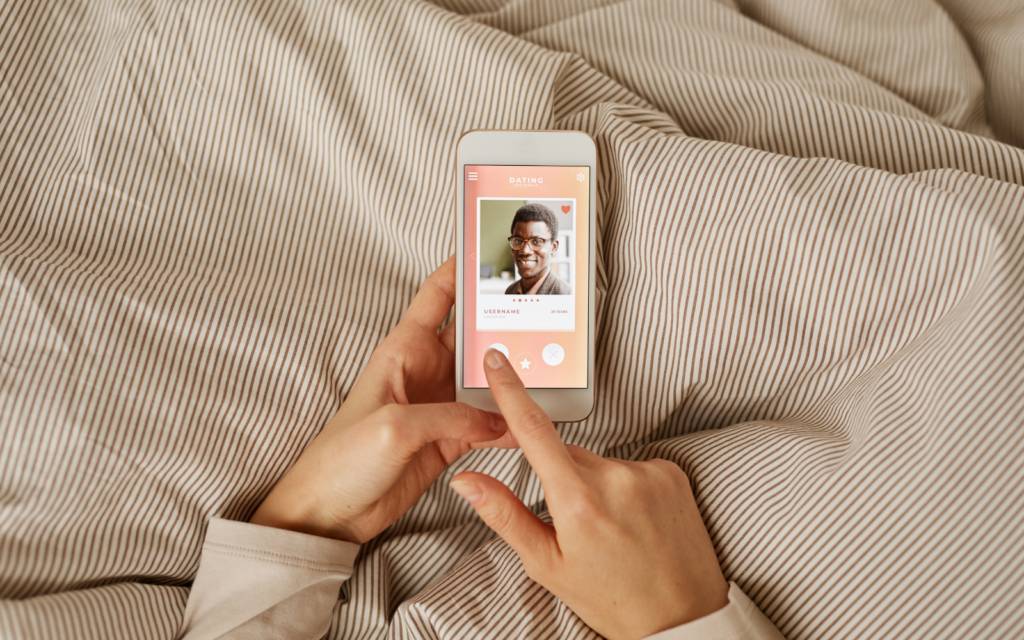Dating apps are the new reality, but do they really make dating easier? My study suggests they complicate it further.
Questions about trust and online dating regularly crop up along with headlines about unpleasant online approaches, scams and even physical assaults when dates move offline. Still, dating apps like Tinder remain hugely popular, downloaded and used mostly on cellphones to meet new people. In fact, they have received increasing traffic globally in recent years despite these bleak stories and spurred by COVID-induced lockdowns.
My ethnographic research in Cape Town, South Africa, shows that Tinder dating is riddled with contradictory feelings. As an anthropology scholar who is curious about intimacy and apps, I followed the dating journeys of 25 Tinder users for two years.
I soon found myself confronted with a paradox: even though using the app had become a mundane everyday practice, app users described meeting someone on Tinder as less “real” or less “authentic” than meeting someone offline. This may make it even more challenging to relate intimately in a time when trust is often likened to naivety or vulnerability.
The study
What I set out to explore was how the app becomes part of peoples’ lives in Cape Town. Meeting most of my research participants regularly, I was able to see how their approach to using the app changed over time. They were from different areas and cut across age groups (5 were under 25, 17 between 25-40 and 3 between 40-55). 14 of them identified as male, and 11 as female. The majority (75%) would be classified as “white” – I recruited most participants via a research profile on the app in a “whiter” area of a town, a lingering result of apartheid spatial segregation.
A Tinder profile can be set up in almost no time. After downloading the app and connecting it to a Facebook account, all that is left to do is select some profile pictures, perhaps write a short biography, and choose a few parameters (interested in men or women, within what age frame, and how far do you want to venture to meet them?). Encountering a potential match, users move their finger over the image of the person to the right if they are interested in them and left if not. If a person expresses interest back, you’re matched and can exchange messages.
Geographic proximity aside, who one sees on the app is further determined by an opaque algorithm that Tinder is notoriously secretive about. Parent company Match Group Holdings owns 45 dating services worldwide and Tinder alone has been downloaded more than 400 million times, producing 55 billion matches, a compelling impact on a lot of love lives.
Common experiences
Exploring what it means to use Tinder for the individuals in my study, I found that the app was regularly deleted. This was because of an accumulation of disappointments such as missing a “spark”, excitement thinning out and being “ghosted”(ignored).
Interestingly, though, users also kept re-downloading Tinder and changing their approaches by choosing different profile pictures, tweaking biographies and patterns of swiping. Swiping styles would depend on previous experiences and the kinds of intimacy they were currently looking for. Commonly, returning users would adopt a more casual approach and try to manage their expectations.
32-year-old PhD student Johana (not their real name), for instance, had been on and off Tinder for years but continued mustering hope of a meaningful connection. Most of her dates had been either mediocre or disillusioning. One looked nothing like his profile picture, another was much shyer offline than on and others were pushing for sex. Then suddenly she found herself on a captivating eight-hour-long date.
For days she waited for him to respond to a message she sent after their magic night. She tried everything to distract herself: she buried herself in her studies, met with friends, and switched her phone off – just to switch it back on and sneak another peek at it. When it had become clear he had no interest in pursuing anything further (and after deleting and re-downloading the app) Johana decided to approach Tinder dating differently.
Read more: How Tinder is being used for more than just hook-ups
She explained that she was now simply using Tinder as a means to connect and potentially have a “fun experience” that may or may not evolve into something worthwhile. Concluding that her directness on Tinder was interpreted as neediness by men, it seemed restraint might avoid further frustration and rejection. This affected how she was chatting, the kinds of meetings she arranged (daytime rather than night) as well as her biography, now briefly describing her as wanting to meeting new people. However, each intriguing connection would have the ultimate dating challenge resurface: how to establish a meaningful connection while managing the risk of being hurt. And that at Tinder’s fast, gamified swiping pace.
The end of love?
Tinder is marketed as liberating and empowering, especially for young women. The app promises the chance to create connections and meaning out of nowhere, to link people and places and fulfil romantic desires. And users in my research did embrace Tinder as a tool to meet people they would otherwise have been unlikely to meet.
However, grand romantic ideals seem to be replaced by uncertainty and strategies of detachment in the process. The app’s mostly vacant assurance of romantic magic helps explain why many users insisted that Tinder makes matches that lack meaning and “realness”.
Read more: How scammers like Anna Delvey and the Tinder Swindler exploit a core feature of human nature
The idea that Tinder-initiated encounters lack authenticity is also in sync with the dominant view that embedding technologies into everyday activities (including the most intimate ones) is a damning symptom of the contemporary zeitgeist.
Undeterred by years of dating app use and numerous stories of relationships and friendships originating on apps, satiric blog entries poking fun at Tinder clichés, Instagram accounts like Tinder Nightmares as well as academic literature suggest that Tinder intimacy liquefies or ends love as we know it.
All is not lost
But after two years using an in-depth research approach, I came to the conclusion that, despite negative associations, dating apps have their place and their intimacies are not lesser than those originating elsewhere. Connections made via Tinder are neither different by nature, nor are they easier to navigate.
Regardless of the image of Tinder as a superficial platform and of Tinder fatigue, there was not just a persistent use of the app but also an enduring desire for connections that feel meaningful. The problem with Tinder is not that experiences are less real. At the root of frustrations is rather a one-dimensional view of “dating”, formatted as an eroticised encounter that requires an immediate and powerful spark.
From excitement to hurt, a lot happens in commodified, gamified dating app environments – notwithstanding the composed approaches adopted by their users. Thinking of emotions on the app as something that can be kept in check and of Tinder as something removed from “real life” may not only produce disappointing encounters in the moment, but it could also influence how people think about dating in the future.
This article first appeared on The Conversation.




